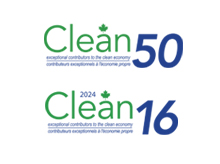E-WASTE RECYCLING
E-WASTE RECYCLING WITH pH7 CLOSED LOOP METAL EXTRACTION.
pH7 is changing e-waste recycling by creating a metal extraction process that consumes 84% less energy, 98% less water, 100% less NOx and SOx emissions all while increasing base and precious metals extraction yield, including Copper, Tin, Gold, Silver, Platinum, and Palladium.
pH7’s process does not only offer the opportunity to replace high-polluting smelting but more importantly, has the potential to make their processes more sustainable and profitable.
E-WASTE RECYCLING IS AN UNREALIZED OPPORTUNITY.
In 2019, more than 50 million metric tonnes of e-waste was generated with less than 20% being recycled. Generated waste has only continued to grow and is projected to reach almost 75 metric tonnes by 2030.
The e-waste solution developed by pH7 is most applicable on pre-treated materials that have been through some level of shredding and separating, or heat treatment. This could allow for the expanded extraction of main elements such as gold, silver, palladium, and copper, as well as additional base metals such as tin and nickel.
CHALLENGES IN E-WASTE RECYCLING.
- E-waste recycling is expensive due to inadequate design and assembly of consumer products, complicating the recycling process.
- Smelting demands a lot of energy, has a large carbon footprint, and is limited by capacity.
- Traditional hydrometallurgy poses scale concern while high cost of operations.
- 50% of e-waste is in North America and the EU and is not processed in a timely manner.
Recycled metals extracted from e-waste have the potential to participate in a circular economy that can be used in numerous industries including increasing the supply of critical metals for the transition to renewable energy.
E-WASTE AS A SECONDARY SOURCE OF CRITICAL METALS
BASE METALS
Copper / Tin / Lead / Nickel / Aluminum / Zinc
PRECIOUS METALS
Gold / Palladium / Platinum / Silver




